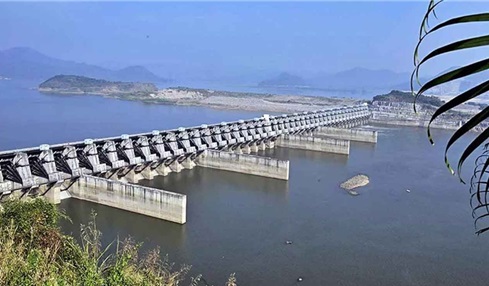Syllabus:
GS2: Functions and Responsibilities of the Union and the States, Issues and Challenges Pertaining to the Federal Structure, Devolution of Powers and Finances up to Local Levels and Challenges Therein.
Context:
Recently, Telangana CM challenged former CM and BRS leader K Chandrashekar Rao to a debate in the state Assembly over the contentious Banakacherla reservoir project compromising Telangana’s water interests.
More on the news:
- The Banakacherla reservoir project is meant to transform Andhra Pradesh’s drought-prone Rayalaseema region into a fertile land.
- The Telangana government, opposing the project vociferously, has said it violates the Andhra Pradesh Reorganisation Act, 2014.
- Andhra Pradesh government claim is that the water being diverted to Banakacherla is surplus water from the Godavari.
Banakacherla Reservoir Project
- Andhra Pradesh Chief Minister has unveiled a proposal to link the Godavari and Penna rivers via the Krishna River, and construct a major reservoir at Banakacherla in Nandyal district.
- The project’s first phase involves increasing the Polavaram Right Main Canal’s capacity from 17,500 to 38,000 cusecs to divert Godavari water to the Krishna River, then the capacity of the Thatipudi Lift Irrigation Scheme’s canal will be increased from 1,400 to 10,000 cusecs.
- A reservoir will be constructed at Bollapalli in Guntur district, where lift stations at Harischandrapuram, Lingapuram, Vyyandana, Gangireddypalem, and Nakirekallu will pump water at a rate of 28,000 cusecs.
- From Bollapalli, water will be diverted to the Veligonda and Banakacherla reservoirs through a tunnel passing under the Nallamala forest.
Technical and Environmental Concerns
- Telangana claims backwater flooding risks upstream, potentially submerging Bhadrachalam temple, Manuguru plant, and disrupting drainage.
- High lift-station energy costs and complex infrastructure over 417 km: open canals, pipelines, and tunnels.
- Environmental clearance hasn’t been granted; Polavaram canal is already near full capacity in 75 % dependability years.
Telangana’s Opposition
- Telangana is concerned that the project could significantly reduce its allocated share of Godavari water.
- Beside the violation of provisions of Andhra Pradesh State Reorganisation Act, 2014, the Telangana government also argues that the project should be kept in abeyance because it has not yet received approval from the Apex Council managing the Krishna River Management Board (KRMB) and the Godavari River Management Board (GRMB), and the Central Water Commission.
- Telangana argues it was allotted 968 of 1,486 TMCft by the Godavari Tribunal, which didn’t define surplus water, making the Banakacherla project a threat to its water security.
- According to the Telangana State Government, diverting Godavari waters to Banakacherla will affect the water projects of the state.
Constitutional and Legal Framework for Dispute Resolution:
- Article 262: Parliament has the authority to make laws for resolving disputes over inter-state river waters, and these laws limit the Supreme Court’s power in such cases.
- Inter-State River Water Disputes Act, 1956: It establishes tribunals to settle inter-state river water disputes.
- River Boards Act, 1956: The Central government can create River Boards to regulate and develop inter-state rivers.

